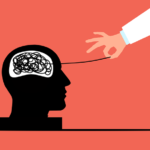Emotional triggers are deeply reactive and sensitive places within us that become activated by external stimuli, such as someone else’s behavior or comments.
They represent unresolved emotional wounds and often evoke intense reactions that feel disproportionate to the present situation. At their core, triggers reflect our unhealed emotional pain, often tracing back to formative life experiences.
What Are Emotional Triggers?
An emotional trigger is anything that touches an unhealed wound, causing discomfort or pain. These triggers often provoke a powerful emotional chain reaction, bringing up memories and feelings connected to past experiences.
They may stem from childhood events like feeling undervalued, being excluded, experiencing parental neglect, or facing rejection from peers. In more severe cases, they can arise from significant traumas such as the death of a loved one, abuse, or family dysfunction.
These early wounds create a “core wound,” a deeply sensitive area of emotional pain that we instinctively avoid. The stimulation of this wound can activate the brain’s amygdala, triggering a fight-or-flight response, as though the situation is life-threatening.
When triggered, we often find ourselves overwhelmed and emotionally confused, unable to separate the current situation from the unresolved emotions tied to the past. This disorientation can make it difficult to see clearly, leading us to react in ways that may feel justified in the moment but are rooted in past pain rather than present reality.
Why Triggers Persist
Many of us avoid triggers to protect ourselves from the pain they bring. While this strategy may offer short-term relief, it doesn’t address the underlying wound. Triggers will continue to resurface until the unresolved emotional pain is acknowledged and healed.
Our psyche holds on to pain, triggers, and uncomfortable feelings because, on some level, it believes they serve a purpose. These emotions linger until we feel safe enough to release them. When the inner child feels secure, the old strategies and dysfunctional behaviors that no longer serve us will naturally dissipate.
Categories of Emotional Triggers
Emotional triggers manifest in various ways. Common categories include:
- Feeling self-conscious: Situations where we compare ourselves or feel alone in a group.
- Being discounted: Being ignored, stood up, or dismissed.
- Feeling controlled: Experiencing someone else dictating our choices, emotions, or behaviors.
- Feeling taken advantage of: Situations where we feel exploited, like when someone doesn’t repay a loan.
- Feeling vulnerable: Being exposed in situations that feel unsafe or unprotected.
- Relationship challenges: Feelings of loneliness, smothering, or disconnection in relationships.
- Boundary violations: Experiencing disrespect or invasion of personal space.
- Moral discomfort: Witnessing actions that clash with our values or beliefs.
- Fear of the future: Anticipating threats or imagining worst-case scenarios.
Coping with Emotional Triggers
The first step in coping with triggers is creating a sense of safety. When our nervous system calms down, rational thinking becomes possible, allowing us to process our emotions effectively.
- Pause and recognize the trigger: Acknowledge the emotional reaction without judgment.
- Create safety: Engage in grounding techniques such as deep breathing, mindfulness, or self-soothing activities. These help calm the fight-or-flight response and reroute the brain’s chemistry.
- Reframe your perspective: Shift your focus from the external event to your internal reaction. Recognize that the intensity of your feelings stems from unresolved pain rather than the immediate situation.
- Reinforce new pathways: Repeatedly practicing calming responses to triggers strengthens healthier emotional pathways. Over time, these new patterns will replace the reactive trauma responses.
Healing Emotional Triggers
Healing begins when we stop resisting our emotions and instead allow them to surface and be processed. The unpleasant feelings—such as resentment, grief, or anger—serve a purpose. They exist to be acknowledged, understood, and eventually released.
Our psyche naturally moves toward healing when we create the right conditions. This involves cultivating self-compassion, seeking support, and addressing the root causes of our triggers. Therapy, journaling, and inner child work can be particularly effective in this process.
The Role of Safety in Healing
The inner child—the part of us carrying those early wounds—needs to feel safe to let go of old coping mechanisms. Once this safety is established, dysfunctional behaviors will no longer feel necessary and will naturally fade.
Conclusion
Emotional triggers are not simply reactions to external events; they are opportunities for healing and self-discovery. By understanding their origins, recognizing their patterns, and creating a safe space for healing, we can transform our triggers into stepping stones toward emotional freedom.
With patience and consistent effort, we can free ourselves from the chains of past pain and live with greater clarity, resilience, and inner peace.













